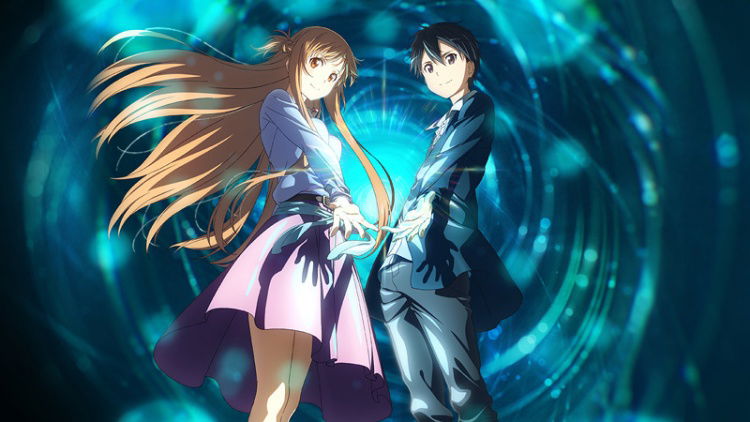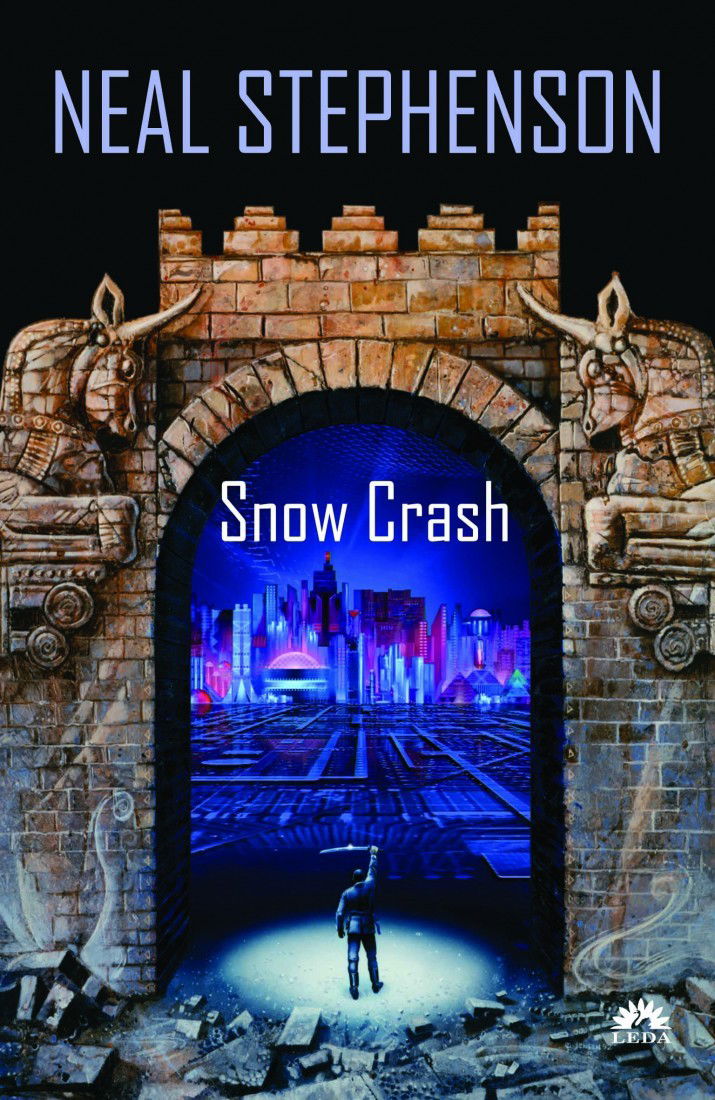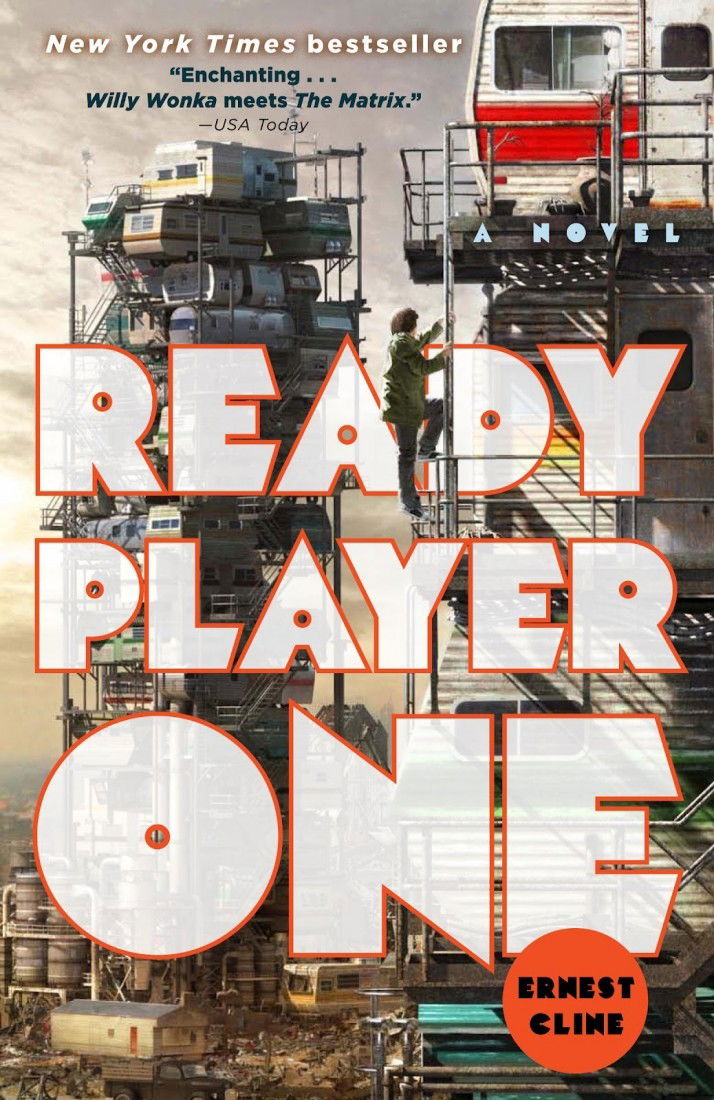It’s 2016 and the year of Virtual Reality is upon us. Sure, people are playing with the Oculus Rift right now and PlayStation VR is coming this October, but it’ll still be a little while before every gamer’s home has a designated space for VR. Still, though, it’s hard to believe that games like Fallout 4 are already being ported. Pretty soon, we’ll all be virtually immersed in our favorite game worlds. Since science fiction is typically a good indicator of what’s to come with new technology, maybe it’s a good time to take a look at the top 5 virtual worlds in popular fiction.
5. The Matrix
I kind of have to start with 1999’s huge hit The Matrix, no? In the same way, that William Gibson’s 1984 novel Neuromancer (which is about a virtual world also called the Matrix!) was one of the first novels to prompt a deep exploration of cyberspace for authors, the Wachowskis’ The Matrix was one of those seminal films that began the same conversation in cinema. Sure, the first film spawned two mediocre sequels, but The Matrix was an undeniable trendsetter in film technology that still holds up today, so I’ve got to include it.
Having said that, it has it’s problems. As far as virtual worlds go, the Matrix has some big downfalls, like, you know, the enslaved population of mankind. While the film is about freeing people from the machines’ virtual prison, the Matrix itself is pretty awesome. I mean, if the power to render an entire planet virtually isn’t impressive enough from a technology and coding perspective, then just think about all of the cool things Neo and his friends get to do. Want to learn Kung Fu? Here you go. Need to learn how to fly a helicopter? Done. Does bending spoon with your mind? Check. For many, The Matrix fulfilled a fantasy, one that included saving everyone in the world while wearing very cool trench coats.
4. Avalon
This one’s a little more obscure but very cool. Assault Girls is a 2009 short film by Mamoru Oshii, director of some pretty prolific anime films–like Ghost in the Shell and Patlabor–and the film is a spiritual sequel to his 2001 film Avalon. The plot of Assault Girls is pretty straightforward. Four players in a virtual game world called Avalon team up to take down a giant sandworm. It seems to me that the film was created by Mamoru Oshii to delve further into the intricacies of a virtual game world on film, which he didn’t quite do in his earlier film.
This is why the film was so cool to me when I first saw it–it ditched a lot of the story building and instead focused on how a fully immersive game world would operate. There’s talk of player levels, nods to popular fighting games, and even discussion of certain stats. For instance, when a character wanders off in a desert by himself, he’s warned by the system that his chances of being rescued are pretty slim seeing how his Luck stat is so low. This certainly isn’t the first virtual world in fiction that existed in the form of a video game, but it definitely encapsulates a lot about what is cool about that very idea.
3. The Metaverse
The first time I read Neal Stephenson’s Snow Crash, I was blown away. Honestly, I was floored just reading the synopsis on the book jacket. First, the main character’s name is Hiro Protagonist, and he’s a pizza delivery driver IRL and a virtual samurai master in the Metaverse (mild spoiler: he’s pretty badass with a sword outside the Metaverse, too). Awesome, right? Throw in some pretty deep thoughts about the beginning of language, religion, and computer coding, mix it with a little bit of dystopian future, and voila! You’ve got Snow Crash.
The novel takes place in both the real world and the Metaverse, a virtual world that Hiro, who is a computer programmer, helped create. Reading Snow Crash and getting into the descriptions of how the Metaverse works… well, it’s almost unbelievable that Stephenson wrote the novel in 1992. A lot of virtual world fiction pre-2000 can seem very, very cheesy (I’m looking at you, Hackers!), often focusing less on creating a world, and instead giving us a space that seems so alien. It’s almost as if the creators are saying, “This is cyberspace, man! It’s crazy and full of polygons and shit!” Not Snow Crash. The Metaverse is explained in such a way that is still relevant today, a quasi-physical space mirroring our own in many ways, and not just a place where people go to play, but a place where people socialize and bring their baggage with them.
2. Aincrad
I was at a dying convention in Columbus, Ohio. It’s the kind of convention you show up to because you wanted to see that one cool panel with the author guy who wrote that thing you read, but you end up feeling like you should’ve just saved your money. After the panel (which was just okay), I wandered around with a friend for a while and we figured we would go grab a gyro and find that anime room we heard about earlier. We followed the signs and entered a mostly empty theater. Then our brains broke as we watched the first boss battle from Sword Art Online.
I shouldn’t even need to explain this, but for people who’ve been living on another planet, Sword Art Online is an anime series based off of Reki Kawahara’s light novels of the same name. It follows the adventures of Kiriko, a gamer trapped inside the virtual world of Aincrad along with thousands of other people. The only way to escape the game world is to 1) die, which results in death IRL, or 2) to beat the game by defeating every boss in the 100 floor tower.
Having read the first novel and the manga adaptation, and also having watched the series, I have to say that Aincrad is an amazing virtual world. Gamers can especially relate to it, seeing as how it is essentially a VR game, complete with leveling, bosses, and sword skills. When it comes to virtual world fiction focused on gaming, it’s the little things that go a long way, and SAO has plenty of them. There’s a skill for everything, including cooking, and the only option for some players is to make a living in Aincrad by utilizing these mundane skills, which creates a whole ecosystem and ideologies and institutions. Those last two things are incredibly important when a writer wants to make a believable VR world. It can’t just be there, it has to be alive, and Aincrad most definitely is alive.
1. The OASIS
If you haven’t read 2011’s Ready Player One, stop reading this article and go get that book right now. Trust me, you’ll love it. Sure, it’s a tad bit YA for my taste, and Ernest Cline isn’t the best writer ever, but the virtual world (or worlds) he creates inside the novel is the ultimate gamer fantasy. It’s called the OASIS, or the Ontologically Anthropocentric Sensory Immersive Simulation. People still live IRL, but nearly everything of note takes place in the OASIS. While it started as a sort of video game, it grew into Second Life on steroids, where people go to work at various places (the main character’s mom was the equivalent of a phone-sex operator in the OASIS), where kids go to school (there is an entire planet dedicated to it), and where gamers adventure across the digital universe (there are literally thousands of planets inside the program).
The one thing that makes the OASIS number one over Aincrad is its virtual spread and limitless possibilities, but in many ways, they are alike. As I mentioned, the great thing about SAO is it’s attention to detail concerning virtual game worlds and how it’s the little things that go a long way in fleshing out the experience. Ready Player One does this, too, but it just does it better and more often. A player may be able to level up sword skills, cooking skills, etc in SAO, but in RP1, you can do more. It’s not exclusive to any setting–fantasy, sci-fi, dystopian–it’s not exclusive to any weapons–guns, swords, giant mechs–and it’s not exclusive to any players–it costs a quarter.




